Text
Six Organs of Admittance Interview: More Than a Couple Chairs

Photo by Kami Chasny
BY JORDAN MAINZER
When Ben Chasny dives into something, he usually dives deep. Upon answering the phone in February, when I called him to talk about his new Six Organs of Admittance album Time Is Glass (out today on Drag City), he seemed a bit scattered. Despite mentally preparing himself all day for the interview, he got distracted by a "What are you digging lately?" Bandcamper compilation Drag City asked him to put together to advertise his record release. (A music fan with a voracious appetite, Chasny was rediscovering music he had purchased a couple years prior and forgot about.) Six Organs records often occupy the same dedicated headspace, Chasny setting aside blocks of time to think about nothing else. That is, until Time Is Glass. On his latest, Chasny blurs the lines between his outside-of-music life and the music itself, the album a batch of songs that reflects on the magical minutiae that sprout during a period of needed stasis.
The last time I spoke to Chasny, he and his partner [Elisa Ambrogio of Magik Markers] were still settling in from their move to Humboldt County in Northern California. "When Elisa and I first moved here, we didn't have any friends," Chasny said. "But there's a group of us that live in Humboldt now. A bunch of my friends moved up since the last time I talked to you." That includes fellow Comets on Fire bandmate Ethan Miller and his partner, fellow New Bums musical partner Donovan Quinn, and folk singer Meg Baird and her partner. "Every New Year's Day, if it's not pouring rain, we take a walk on the beach," said Chasny. One such photoshoot on January 1, 2023 yielded the album cover for Time Is Glass: That's Miller and his poodle, along with Baird's Heron Oblivion bandmate Charlie Saufley. This unintentional artistic collective meets up often, whether for coffee or as Winter Band, a rotating cast of area musicians who form to open up for musician friends when they come through town, like Sir Richard Bishop of Sun City Girls. As such, according to Chasny, Time Is Glass is a celebration of community.
Perhaps the supportive strength of his artistic family gave Chasny the willpower to incorporate elements of his daily life into Time Is Glass, something he couldn't avoid. He didn't share with me exactly what in his personal life made it impossible to separate the two, though he mentioned his dog, a difficult-to-train puppy that was a mix of three traditionally stubborn breeds. Said dog inspired "My Familiar", a song that uses occult language to inhabit the mind of his obstinate canine companion. "And we'll burn this whole town / No one says there's good," Chasny sings, alternating between his quintessential hushed delivery and falsetto, his layered vocals atop circular picking exuding a sense of sparseness. Indeed, you wouldn't expect a Six Organs record about home life to sound totally blissful; Time Is Glass is at once gentle and menacing. The devotional "Spinning In A River" portrays the titular carefree act as lightly as the prickle of Chasny's guitar or as doomily as the song's distortion. "Hephaestus" and "Theophany Song" imagine their respective mythological characters as gruff and voyeuristic. "Summer's Last Rays" indeed captures a sense of finality, Chasny's processed guitar and warbling harmonium providing the instantly hazy nostalgia before the fade-out. The album is bookended by songs more straightforwardly hopeful, the opener "The Mission" a dedication to friends falling in love with their new place of residence, the closer "New Year's Song" a twangy ode to dreaming. But it's the moments in between that Chasny was forced to capture on Time Is Glass. And thankfully, what was born out of necessity yielded, for him, new ways to interpret the same old, same old.
Read my conversation with Chasny below, edited for length and clarity. He speaks on domesticity, mythology, playing live, and Arthur Russell.

SILY: You've lived in Humboldt County for a bit. Is Time Is Glass the first Six Organs record in a while you made while situated in one place?
Ben Chasny: I did do a couple records here before. The first one, I was in the process of moving here, so I wasn't really settled. The second was at the beginning of lockdown. This is the first one I felt like was recorded at a home. Everything was settled, I have a schedule. When I was doing the first one, I didn't even have furniture in the house. I had a couple chairs. [laughs]
SILY: Do you think the feeling of being recorded at a home manifests in any specific way on the album?
BC: I started to incorporate daily domestic routines into the record, more often. A lot of the melodies were written while taking the dog for a walk, which I've never done before. There was always stuff to do as I moved in. The times weren't as separate. Before, it was, "Now I'm recording, now I'm doing life stuff." There was a merging of everything here. I would listen to it on my earbuds while taking walks and constantly work on it for six months.
SILY: It definitely has that homeward bound feel in terms of the lyrics and the sound, like you've been somewhere forever. There are a lot of lyrics about the absence of time, and there's a circular nature to the rhythms and the guitars. Does the title of the album refer to this phenomenon?
BC: A little bit. Time does seem, in general, post-lockdowns and COVID, different. The lyrics on the record have a bit more domesticity. It always seems like there was something that had to be done, that would normally keep me from doing music, that I tried to incorporate here. Maybe I'm just getting older, too. I'm getting more sensitive towards time. I'm running out. [laughs]
SILY: Was there anything specific about your domestic life that made you want to include it in your music?
BC: Just that I had to include it in order to do anything. It was no longer separate. The way life ended up working out, I could no longer separate my artistic life from other life. I had to put the artistic aspect into it in order to work. Instead of getting frustrated, I brought [music] more into the house.
SILY: Did working on the record give you a new perspective on domesticity?
BC: I don't know. A little bit. I was just trying to come to terms with basic life things. Let me look at the record, I forgot what songs are on it. [laughs] The song "My Familiar" is about my dog. I got this book called Cunning Folk and Familiar Spirits, which was sort of taken from transcriptions of witch trials from Scotland in the 1500's. A lot of dealing with things like witches' familiars and demon familiars. I found a very strong similarity between that and my dog, which seemed like it was maybe a demon. She's a Husky-German Shepherd-Australian Shepherd mix, so as a puppy, she needed a lot of work. So that became a song. That's a more humorous way everyday life made its way into the music.
[With regard to] the last song, "New Years Song", Elisa and I have a contest on New Year's Eve when we're hanging out where we go in separate rooms and have one hour to write a song. We come out at 11 or 11:30 and play the song for each other. We've done it for a few years now. This was the song I wrote for New Year's Eve going into 2022.
SILY: You talk about God on Time Is Glass and delve a little bit into mythology. Was that something you were thinking about on a day to day basis when writing?
BC: The “Hephaestus” song was just a character. That was a rare song for me in that I was trying to make sounds that particularly evoked a mythological figure. I've made nods to mythology in the past, but the titles were almost an afterthought. This particular song, I was trying to make the sounds of that character in their workshop with the fire and anvils. I was trying to evoke that feeling. That was kind of a new one for me.
SILY: Maybe I'm reading into it too much, but you also seem to talk a bit about your state of mind on "Slip Away".
BC: It's funny you caught onto that, because I wasn't really expecting to bring it up during interviews. I wouldn't say that I came close at times in the past couple years to schizophrenia, but I could see way off in the distance and horizon what that would be like. I...was trying to write about that. At the same time, the lyrics that have to do with two minds and the splitting of the mind are also somewhat of a reference to the idea of a celestial twin or Valentinian gnosis, how you have a celestial counterpart. That idea [is behind the concept of] someone's guardian angel.
SILY: On a couple songs, you sing to someone or something else. "The Mission" you've mentioned is for a friend and their new partner. What about on "Spinning in a River"?
BC: Maybe it was more of a general idea. It wasn't so much to a person as to a general concept of Amory.
SILY: What were all the instruments used on the record?
BC: I had some guitar, I was singing, and there's some harmonium on it, which I did a lot of processing on, lowering it octaves. I've got some really basic Korg synths. Electronic-wise, there's a program called Reactor I like to use a lot. I do it a little bit more subtly than electronic artists. I use it more for background.
SILY: I picked up the harmonium on "Summer's Last Rays"! I feel like you never truly know when you're hearing a harmonium unless it's in the album credits. Sometimes, that sound is just effects.
BC: There are two different harmoniums. When the bass comes in, that's also a harmonium, but I knocked it down a couple octaves and put it through some phaser. It has a grinding bass tone to it. This is actually one of the few Six Organs records with bass guitar on it. Unless it's an electric record with a band, there's never really been bass guitar. I was really inspired by Naomi Yang's bass playing in Galaxie 500 and how it's more melodic. I told her that, too.
SILY: On "Theophany Song", are you playing piano?
BC: Yeah, that's at my friend's house. I just wanted to play a little melody.
SILY: Was this your first time using JJ Golden for mastering?
BC: I've worked with JJ before. He did Ascent and a few others. I particularly wanted to work with him this time because I had just gotten that Masayuki Takayanagi box set on Black Editions and saw he had done that. I have the original CDs, and I thought he did such an amazing job that I wanted to work with him again.
SILY: Is that common for you, that you think of people to work with and you dig a record they just worked on and it clicks for you?
BC: That's the first time I had just heard something and thought, "Oh, I gotta work with this person." I usually have a few mastering engineers I work with and think, "What would be good for them?" or, "What does this sound like?" I usually like to send the more rock-oriented stuff to JJ, but I was just feeling it this time.
SILY: Have you played these songs live?
BC: The instrumental "Pilar" I have been playing since 2019. That's the oldest song on the record. I did do one show last September where I played a couple of these songs live. I have some ideas on how to work it out. It will be a solo acoustic show, but I [hope] to make some new sounds so it's not so straightforward. One thing about this record is I tried to write songs in the same tuning. On previous records, I used a lot of tunings, and it was a real pain to try to play the songs live. I did write this record with the idea that most of these songs would be able to be done live.
SILY: What have you been listening to, watching, or reading lately?
BC: I just got the Emily Robb-Bill Nace split LP. I just saw her live a couple nights ago. The latest one on Freedom To Spend from Danielle Boutet, which is awesome. Freedom To Spend is a go-to label for me. Also, this split with Karen Constance and Dylan Nyoukis.
I've been reading Buddhist Bubblegum by Matt Marble, about Arthur Russell and the systems he developed, which I knew nothing about. His compositional systems have almost a Fluxus influence. The subtitle is Esotericism in the Creative Process of Arthur Russell, so it's also about his Buddhism as well. When I first heard about the book, I didn't know if I needed to get it, but I heard an interview with Matt about the detailed systems Arthur Russell came up with. It gives me a whole new level of appreciation for him. It's so good.
SILY: Did you listen to Picture of Bunny Rabbit?
BC: It's so good, especially the title track. It seems like when he has us plugged into some kind of effects or delay, he's switching the different sounds on it, but it makes the instrument go in so many different areas. To me, the title track is worth the price of the entire record, even though the whole thing is good.
SILY: What else is next for you? Are you constantly writing?
BC: This is gonna be a very busy year release-wise. I have a couple more things coming out. It's hard to write stuff because I always think it'll take so long for it to come out. I'm halfway working on something, but I have no idea when it will come out.
youtube
#six organs of admittance#interviews#drag city#time is glass#kami chasny#ben chasny#drag city records#bandcamper#elisa ambrogio#magik markers#comets on fire#ethan miller#new bums#donovan quinn#meg baird#heron oblivion#charlie saufley#sir richard bishop#sun city girls#arthur russell#cunning folk and familiar spirits#naomi yang#galaxie 500#jj golden#ascent#masayuki takanayagi#black editions#emily robb#bill nace#freedom to spend
0 notes
Text
Oneohtrix Point Never Live Preview: 4/23, Metro, Chicago
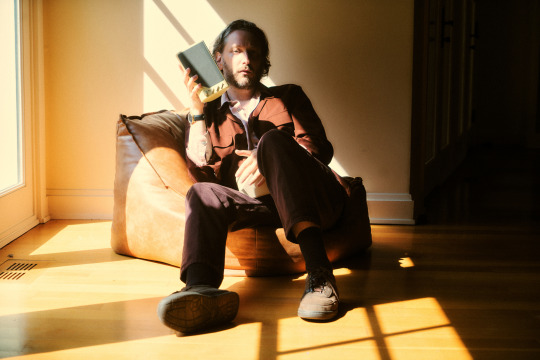
BY JORDAN MAINZER
Synth-heads rejoice! Daniel Lopatin, aka experimental music producer Oneohtrix Point Never, brings his always stellar live show to Metro tonight. His most recent album is last year's Again (Warp), a reflective collection of aesthetics you wouldn't normally associate with OPN's spirituous electronica: shoegaze, alt-rock, prog. Then again, Lopatin similarly mashed together otherwise dissonant sub-genres on 2015's Garden of Delete, the nu metal entry in his vast and ever-expanding catalog. Lopatin's versatility is certainly one of the most impressive things about him, not just in his own work, but in his ability to elevate others, whether R&B star The Weeknd (Dawn FM) or indie rock luminary Soccer Mommy (Sometimes, Forever).
Technically, OPN has two new EPs listed this year on streaming services: Scores and Ambients. The former is a collective of songs from Lopatin's soundtracks to Sofia Coppola's The Bling Ring and the two Safdie brothers features he's scored, Good Time and Uncut Gems. The latter consists of six of OPN's more, yes, ambient-adjacent tracks, including the bookends of 2013's monumental R Plus Seven (with a shorter mix of the choral "Chrome Country" renamed "CC"), Again's "Gray Subviolet", the title track to 2018's Love in the Time of Lexapro EP, Replica's "Sleep Dealer", and the minute-and-a-half "Lovegirls Precinct", included on 2009 compilation Rifts but originally released as part of a split cassette with Cleveland drone duo Outer Space. Take the opportunity to listen to the songs anew, together; to my ears, that's always been the best way to experience Oneohtrix Point Never, finding resurfaced commonalities among the different stages of his brilliant career. And it's also how he'll likely play live, finding a cohesive set list by placing Zones Without People and Russian Mind songs next to Age Of and Magic Oneohtrix Point Never material.
The show is presented by CHIRP Radio. New York-based singer and modular synthesist Arushi Jain opens. Doors at 7:00 PM, show at 8. Tickets still available at time of publication.
youtube
#live picks#oneohtrix point never#warp#metro#chirp radio#again#opn#metro chicago#daniel lopatin#warp records#garden of delete#the weeknd#dawn fm#soccer mommy#sometimes forever#scores#ambients#sofia coppola#the bling ring#safdie brothers#good time#uncut gems#r plus seven#love in the time of lexapro#replica#rifts#outer space#zones without people#russian mind#age of
0 notes
Text
Oren Ambarchi, Johan Berthling and Andreas Werliin Interview: Winning Concepts

Photo by Thobias Fäldt
BY JORDAN MAINZER
Well, that didn't take nearly as long. A mere two years after releasing the once dormant and eventually critically acclaimed Ghosted, Oren Ambarchi, Johan Berthling, and Andreas Werliin are releasing its follow-up on Friday via Drag City. The trio returned to Studio Rymden in Stockholm last June, with years of performing together under their belt, and laid down the tracks for Ghosted II in a mere two days. Like its predecessor, Ghosted II delves into jazz and drone music, has numerical track titles, and features guitar from Ambarchi that sounds like an organ, album art by Pål Dybwik, and video art by Cédrick Eymenier. Less like its predecessor (though not wholly unlike it), Ghosted II plays with dynamics, is more improvised with minimal overdubs, and roots itself in everything from ambient music to funk. Oh, and its numerical track titles are in Swedish instead of Roman numerals.
Seriously, Ambarchi, Berthling, and Werliin could follow the same four-track formula with the same featured artists every time and I would be more excited with every release. That's how potent Ghosted II is. “en” sports brilliant textural contrasts, pattering drums, scraggly guitar, and barely-there bass, but nonetheless wears a zesty groove. “två” I can most aptly describe as chrome lounge jazz, rife with repeated bass, slow hand percussion, and cold, warbling guitars that pulsate at constantly changing speeds. “tre” is where we first truly hear those inexorable Ambarchi guitar sounds, whirring and shapeshifting with a light chirp and glitch as Werliin's percussion circumvents Berthling's bass. The song sounds like it's traveling through a prickly continuum. And “fyra” ends the set with shimmering ambiance, syncopated bass and drums steady until Werliin jumps into a clattering groove, eventually letting Ambarchi take front and center before the three descend into silence. Ghosted II is the type of album as easy to listen to as it is heady and complex, an achievement that should further this trio's welcome emergence in the experimental music realm.
Oh, and I forgot to mention another similarity to Ghosted: Ambarchi, Berthling, and Werliin once again were willing to answer some questions from me over email about the album. Read their responses below, edited for clarity, including some can't-miss music recommendations.
Since I Left You: How would you say Ghosted II is different from the first record, and how is it a continuation of what you were doing on Ghosted?
Oren Ambarchi: I would say that it's a continuation from the first one. The approach in the studio was very similar: We simply got together and improvised with little discussion beforehand. It was recorded very quickly--from memory, all the pieces are first takes, and there was minimal overdubbing.
SILY: How did playing live as a trio inform Ghosted II? When you went in to the recording, did you think of it like a live concert with no audience?
OA: Playing live has been really great, as we've been developing our language as a trio from show to show, and this definitely impacted the new one. Like the first trio recording, the vibe in the studio was very relaxed. It was like playing together in someone's lounge room. Personally I tried to approach the new one with newer guitar sounds, many of which I discovered in real-time whilst we were recording. I was hoping my playing would be a little different to the playing on the first record. I didn't want to repeat myself, and I'm sure the others felt the same way regarding how they approached the recording. So the new album is, on the one hand, a continuation from the first album, but on the other hand, it's an exciting new development for all of us.
Johan Berthling: I think playing live has merged our sounds together quite a bit. We know each other's playing a lot better. When recording the first album, we had nothing. Now, we have a sound and a foundation we can continue to build on. For me, the studio (could be) a magical environment where all is possible. The live situation has so many parameters that are not controllable, so I want to keep them apart. I never look at recording as a live performance.
Andreas Werliin: Playing live in front of an audience is very different from being in a studio recording session.[It has] different energy. It’s weird: The great live shows rarely transform into a good recording. It’s usually too much information. What we experienced when playing live was that we could use much more dynamics than on our albums.
In a studio recording, you can use the room and vibe to play less and still keep it interesting, making small changes instead of the big movements we do live.
SILY: Is there something unique about Studio Rymden that fosters creative collaboration?
OA: It feels super relaxed recording there, which really suits our vibe and somehow enhances what we are going for. I think we are all inspired by the room at Rymden and play off of the space.
JB: It has a really nice living room atmosphere and has all the equipment we need. Daniel [Bengtson], who runs it, is also a great and knowledgeable guy making everyone feel at ease.
AW: [It's] a good sounding, very relaxed place. [It] feels like being at a home party.
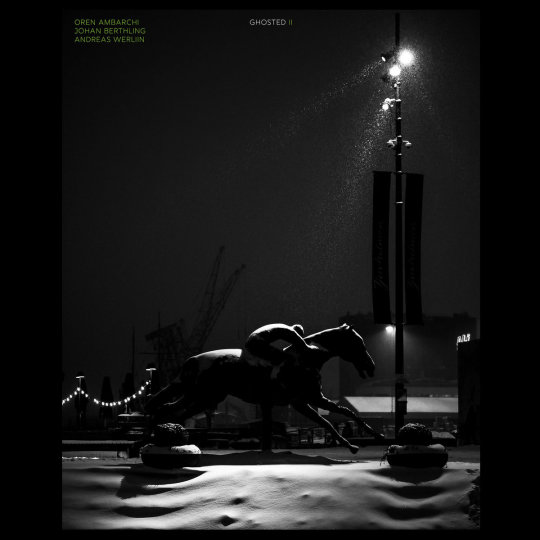
SILY: Why was it important for you to have continuity between the two albums' visual identities (cover art, music videos)?
JB: Why change a winning concept? :)
AW: These days, things are moving so fast. Everything and everybody has to change all the time to not lose the audience's attention, both visually and musically. We took the opportunity to go against that movement, I guess.
SILY: What inspired the track titles this time around?
OA: Laziness. It's 1/2/3/4 in Swedish. Maybe we'll pick another language when we do another release.
SILY: How did the songs on the first record end up evolving live? Do you foresee these songs having a similar live evolution?
OA: Absolutely. It's been really fun expanding on the pieces on the first album in a live context. Those pieces have really gone places. Some live versions of the pieces have lasted 30-40 minutes each.
We've already been playing some of the new pieces live, too, and they are already morphing into new explorations that are quite different from the recorded versions.
AW: We developed a new form and used more improvisation and a lot more dynamics.
SILY: What's next?
OA: We have some shows coming up as a trio which I'm really looking forward to. I really love playing with Johan and Andreas. My next big show...is a new piece titled "Sous Vide" with conductor Ilan Volkov and the Brussels Philharmonic Orchestra. I'm also hoping to start on a new solo record later this year.
AW: I'm excited to release [Ghosted II]. We’re all pretty busy with other projects and family life, so [I'm] just hoping for peace, love, and understanding in general, I guess.
SILY: Is there anything you've been listening to, watching, or reading lately that you've enjoyed or that's inspired you?
AW: I would highly recommend Brighde Chaimbeul's album The Reeling (River Lea). She will play live in our village on the west coast of Sweden on July 7th in an incredible church. Much welcome.
JB: Lately, I’ve been listening a lot to Howlin' Wolf's Message to the Young and John Lee Hooker and Canned Heat's Hooker 'n Heat. Live, I recently saw a fantastic performance by Evan Parker and Alexander Hawkins in Germany!
OA: [I've been] listening to plenty non-stop, but here's a few recent things that come to mind:
James Rushford's Turzets
An unreleased 1974 live recording of Salamat Ali Khan from Berlin
ML Buch's Suntub (15 love)
Tyshawn Sorey's Continuing (Pi)
Ahmir Khan's Khayal By Ustad Ahmir Khan
RLW's When freezing air stings like ice I shall breathe again (Drag City)
Lenny Breau's Quietude
Eduardo Mateo
Glenn Gould's version of Brahms: 10 Intermezzi
Mikel Rouse Broken Consort
Tirzah
Weather Report's Live & Unreleased
I also just picked up an amazing new remaster of Genesis' The Lamb Lies Down on Broadway, which I've been playing endlessly.
I recently watched Dog Day Afternoon with my 16-year-old last night. It was good to revisit that one. I also recently saw a great UK documentary on Cornelius Cardew with footage of the Scratch Orchestra and AMM. Other than that, it's always Law & Order before bed.
Reading:
Scott McClanahan's The Sarah Book
Ian Penman's Fassbinder Thousands of Mirrors
Adrian Sinclair & Allan Kozinn's The McCartney Legacy
Henry Threadgill & Brent Hayes Edwards' Easily Slip Into Another World
Dorothy B. Hughes' The Expendable Man
youtube
#interviews#johan berthling#drag city#studio rymden#daniel bengtson#brussels philharmonic#ghosted ii#oren ambarchi#andreas werliin#thobias fäldt#ghosted#drag city records#pål dybwik#dédrick eymenier#ilan volkov#brussels philharmonic orchestra#brighde chaimbeul#the reeling#river lea#howlin' wolf#message to the young#john lee hooker#canned heat#hooker 'n heat#evan parker#alexander hawkins#james rushford#turzets#salamat ali khan#ml buch
0 notes
Text
Alkaline Trio Album Review: Blood, Hair, and Eyeballs

(Rise)
BY JORDAN MAINZER
Tom DeLonge returned to Blink-182 for the third time in 2022, which meant that Matt Skiba could finally return to Alkaline Trio. As such, earlier this year, A3 ended their longest ever drought between records and released Blood, Hair, and Eyeballs, their 10th studio album. The album is an apparent back to basics effort, recorded in Dave Grohl's Studio 606, and like whenever the Foo Fighters themselves promise something "basic," Blood, Hair, and Eyeballs nonetheless sounds huge and expensive. That's okay, though: It's an effective album with catchy, well-constructed songs, a fitting swansong to the band's longtime drummer Derek Grant. The trio essentially built up the tunes together while in the same room, and their chemistry shines through.
Each song on Blood, Hair, and Eyeballs is, instrumentally, a complete package, everything sounding strikingly natural. Mighty opener "Hot For Preacher" juxtaposes gang vocals and a massive, swinging metal-adjacent lead guitar riff. "Meet Me"'s emo sensibilities are melodic amid all the tempo changes. The Dan Andriano-led "Scars" gallops, propelled by Skiba's lead riff and Andriano's spindly bass line. Even the gothy church bells on "Break" fit alongside Andriano's backing vocals, which echo to the point they sound like they're coming from an evil dimension.
Skiba and Andriano's vocal trade-offs come sincerely, too, and are most effective when one band member supports the other. On Andriano's "Versions of You", he sings about looking back at a broken friendship and realizing that, at its core, it wasn't all that great. He wears Skiba's buzzing riffs and Grant's rat-a-tat drum fills like armor. Similarly, on "Shake With Me", Skiba's vulnerable admissions of lost love are buoyed by Andriano's soaring backing vocals. It's no coincidence, then, that the best song on Blood, Hair, and Eyeballs is centered around the power of voice. On the urgent "Bad Time", Skiba describes being on the phone with a friend at the same time an active shooter situation was breaking out across the street, and how heartening it was to hear this person's voice at that time. Later in the song, he reflects on another time he was almost caught in gunfire and how nice it would have been to hear this person's voice then. Sure, it's a weird way to say, "I love you," or, "I appreciate you," but it's unique.
On closing track "Teenage Heart", the band laments a world today in which so many kids fall prey to gun violence and drug overdoses. You realize what they're really after here, calling the album Blood, Hair, and Eyeballs, a phrase Skiba's mother, an emergency room nurse, used to describe busy nights at the hospital. With the right balance of dark humor and earnestness, Alkaline Trio look back at a begone world where we could rely on our past being miserable for normal, non-violent reasons: awful, crippling angst.
youtube
#album review#alkaline trio#blood hair and eyeballs#rise records#rise#tom delonge#blink-182#matt skiba#a3#dave grohl#studio 606#foo fighters#derek grant#dan andriano
0 notes
Text
Rosali Live Preview: 4/18, Empty Bottle, Chicago
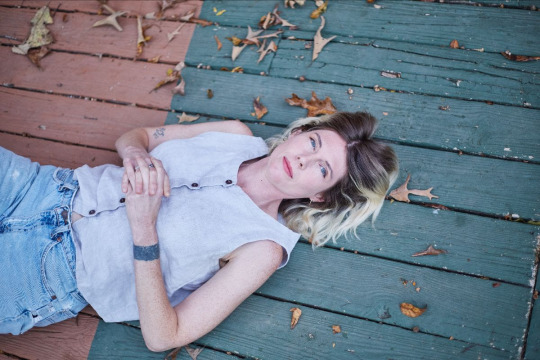
Photo by Asia Harman
BY JORDAN MAINZER
Isn't it remarkable that Destroyer's Dan Bejar, the king of obtuseness, managed to so deftly nail his description of Bite Down (Merge), the fourth album from indie rock musician Rosali? Bejar referred to Rosali's instrumental and lyrical evolution as sporting a "hard-won ease;" I couldn't help but come back to that phrase when listening to standout track "Hills on Fire". As Rosali Middleman gently sings validations like, "That color looks so good on you," her backing band, David Nance's Mowed Sound, hint at something darker, James Schroeder's guitars growing increasingly scraggly. Eventually, Middleman sings, "I can be hellish and awful, too / Anger built in my youth." It's a moment where you realize that Bite Down shows Rosali as wise in her reflective realism, while still avoiding cynicism and leaving room for hope.
Bite Down was written after Rosali moved from her long-time home of Philadelphia to North Carolina; it concerns physical and emotional change while remaining astonishingly present. That interplay is reflected in both her words and the band's instrumentation. Take "Rewind", an easygoing, earnest, romantic country rock song that sees the silver lining in bad times. Eventually, the band's subtle freak-outs yield effects that sound like someone attempting to whoosh back in time but being held back and reminded to live in the moment. On "Slow Pain", Middleman dives head first into her angst, atop steady, pattering drums from Kevin Donahue and Schroeder's restrained lead guitar. "Have you seen my grief? Hold it so I don't spill out," she sings. The song eventually lets you into Middleman's head with piercing guitars resisting being muted, as she describes, "Killing time with the slow pain." And the title track fights despair with Ted Bois' groovy keyboard lines and Megan Siebe's warm cello, Middleman reaching out for help: "I can't seem to bring myself ashore / Put aside your foolish pride / To move beyond the rising tide."

Photo by Harrison Martin
Sure, there are a few songs on Bite Down that center on moods more static: ennui ("Hopeless"), pain ("Is It Too Late"), even horniness (earworm opener "On Tonight"). But it all comes together on the building, burning closer "May It Be on Offer". "And I do wonder / And waste my life / No, I don't wonder / If I waste my life," Middleman sings, clarifying that she knows that "[sitting] for hours / Gazing at the light" is what most would consider bed rotting. As the song progresses, though--keyboard humming, guitars fluttering--Middleman's outlook is brighter. "There is hope upon me / There is reason to try," she sings, a hymnal, or maybe a lullaby, singing herself not to sleep but back to that hard-won ease.
Rosali plays the Empty Bottle tonight, with a backing band of Nance, Schroeder, and Donahue. Local indie rockers Fran open. Doors at 8 PM, show at 9. Tickets still available at time of publication.
youtube
#live picks#rosali#empty bottle#merge records#rosali middleman#asia harman#fran#bite down#destroyer#dan bejar#merge#david nance#mowed sound#james schroeder#kevin donahue#ted bois#megan siebe#harrison martin
0 notes
Text
Pernice Brothers Interview: Writing to Live
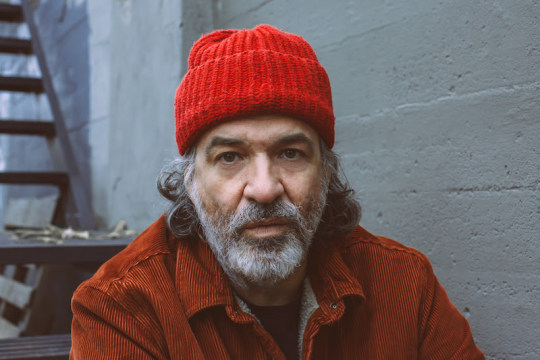
Joe Pernice; Photo by Colleen Nicholson
BY JORDAN MAINZER
The album cover for Who Will You Believe (New West), the first album in 5 years from Pernice Brothers, features a close-up photo of a man who doesn't "care about being seen." That man, of course, is Joe Pernice, who formed Pernice Brothers over 25 years ago after the breakup of his beloved alt country institution Scud Mountain Boys. But while Pernice may be indifferent-to-averse to the idea of celebrity or even public persona, he's not trying to remain hidden, per se. The photo that graces the cover doesn't attempt to be flattering, nor a clean-cut design: It asymmetrically cuts off the brim and top of his hat, his right glasses lens frame, the bottom of his chin, and the back of his head. (Of course, the band name and album title is superimposed on his face.) It makes you pay more attention to Pernice than you otherwise would. What is he looking at? Why? In a way, it really fits Who Will You Believe, a record that exists on a separate plane from today's singer-songwriter albums that tend to be straight diary entries combined with biography or filled with Easter eggs and callbacks. Instead, Pernice, an accomplished writer in many different mediums, shows that he can write about almost anything. The possibilities are infinite.
When I spoke to Pernice over the phone earlier this month, he let me know that he was in the middle of a particularly fruitful period. "I've been writing more songs than I ever have in my life," he said. "I go through these periods where I have a manic blast." Indeed, whether or not Who Will You Believe was born from one of these spurts, the album gives you a sense for how he works. Neko Case duet "I Don't Need That Anymore" started with an off-hand remark his mom made about having a good figure when she "needed it;" Pernice took the line and turned it into a devastating country track about a dying love, replete with twangy, chiming guitars, string swells and steady mallet percussion. He processes the deaths of three important people--his cousin, Rhino executive Gary Stewart, and David Berman--in stunning strummer "The Purple Rain", referencing the last one not with cutesy lyrical winks and nods but ones that even casual Silver Jews/Purple Mountains listeners will pick up, respectfully showing his intentions to pay tribute. Of course, Pernice still finds room for ambiguity, clever wordplay, and fun atop it all, a true songwriter's songwriter. His penchant for cultural allusions remains strong, even in conversation. Referring to a recent day where he wrote 5 songs in a day, 3 of them keepers, Pernice said, " I felt like Sylvia Plath at the end of her life when he was in a manic state of making shit," before clarifying, deadpan, "That was before she put her head in the oven."

Sure, there are some tracks on Who Will You Believe that are purely sad or strange. Pernice croons on the slow "What We Had", atop acoustic guitars, tremolo electric plucking, and tambourine, "It's a comedy of errors, but it's sad / I think of what we had / It's hard to watch good love go bad." Instrumental waltz "A Song for Sir Robert Helpmann", meanwhile, juxtaposes strings, keys, drum rolls, and wordless vocalization, creepy and lurking. Its mood is inspired by Pernice's fear of Helpmann's role as The Child Catcher in Chitty Chitty Bang Bang. "That movie scared the shit out of me when I was a kid," he said. "[Helpmann's] absolutely terrifying." Though these tunes occupy a singular mood, though, for the most part, Who Will You Believe is a fun album, Pernice's brightest and loosest sounding in years. "I always play with people who are good people. I've never made a record with an asshole," Pernice said. "When you get really good players who aren't just phoning it in, it's really cool." Past collaborators pervade the album, such as Joe's brother Bob and wife Laura Stein (formerly of Halifax indie pop band Jale). Toronto-based choral group Choir! Choir! Choir! help Pernice give his eulogies on "The Purple Rain", ending the album on an uplifting note. And his pop sensibilities, Beatles, Bowie, and Bacharach influences shine on "Not This Pig" and "A Man of Means", songs with baroque breakdowns and bouncy drum fills.
Ultimately, Pernice is one of those songwriters who views music as a satisfying puzzle. Though he writes all of his songs on acoustic guitar, theoretically making them easy to play solo live, the tunes undoubtedly shapeshift as he records them. He describes a song like "Hey, Guitar" as "a balls-out, heavy tune"--it's got massive electric licks layered atop jangly strumming and shiny keys, and ripping distorted squalling between verses, fading in and out at the end like an AM radio hit. "I don't think [it] will translate [live]," he said. "[But] you don't know whether [it's gonna be a train wreck] until you do it. Every song was a new song the first time." You can bet he's looking forward to figuring it out, one of the most thrilling parts of music to him. After all, it's only now he's just beginning to dive into an almost 20-year-old song, "Say Goodnight to the Lady" from 2005's Discover A Lovelier You. "I've been working on it lately, and it's started to feel like my song."

Pernice; Photo by Colleen Nicholson
I knew that Pernice had written at least "The Purple Rain" as part of a mourning process, but reading about the context behind Who Will You Believe, I tried to see if I could construct something more broad. Before writing the record, his son retired from playing high-level youth baseball, which Pernice coached, and Pernice went from being on a baseball diamond most of the week for over half of the year, to not being on one at all. As such, I asked him whether songwriting is a way for him to generally process any sort of life change. As it turns out, it's much more. "I write songs so I can manage to function," he said. "It's just a necessary thing for my well-being. It could be anything. The act of doing it is the thing that makes me feel good and not crazy. A lot of times, the subject might not even be all that important in that regard." And so I thought back about the album cover, wondering what Pernice was gazing at during the photoshoot, realizing that, too, doesn't matter. What he feels about songwriting is the way I feel about listening. Both of us--all of us--are just trying to take in the world as best as we can.
youtube
#interviews#pernice brothers#new west#daveed goldman#nobu adilman#choir! choir! choir!#who will you believe#joe pernice#colleen nicholson#new west records#scud mountain boys#neko case#rhino#gary stewart#david berman#silver jews#purple mountains#sylvia plath#robert helpmann#the child catcher#chitty chitty bang bang#bob pernice#laura stein#jale#new radiant storm king#the beatles#david bowie#burt bacharach#discover a lovelier you
0 notes
Text
Real Estate Live Show Review: 4/11, Thalia Hall, Chicago

Real Estate's Martin Courtney & Alex Bleeker
BY JORDAN MAINZER
During the middle of Thursday's Real Estate show at Thalia Hall, part of their Infinite Jangle tour, I thought to myself about the New Jersey band, "Are they the millennial generation's version of college rock?" Independent of the extent to which they get played on independent university radio stations--let alone SiriusXMU--Real Estate were at least thinking about their forebears during the making of their latest album Daniel (Domino). Frontperson Martin Courtney cited R.E.M.'s Automatic For The People--which added elements of baroque to the Athens, GA greats' punky folk--when working with producer Daniel Tashian, known for crossing over country singers into the pop mainstream. Tashian encouraged Real Estate, too, to return to their penchant for hooks, and they self-consciously made a comparatively poppy record after years of darker hues, longer songs, and general experimentation. As a result, they, and yours truly, think Daniel is at once their best album yet and their least hyped.

Real Estate's Julian Lynch, Sami Niss, Courtney, & Bleeker
Indeed, Daniel exudes a weightlessness, free of expectations. The songs, more often than not, are about songwriting and musicmaking in an increasingly cruel universe; as a result, the band plays what comes to mind. That spirit showed itself in their show on Thursday. The psychedelia of "Say No More" and bouncy bass and keyboards of "Flower" seemed effortless, the vocal harmonies between Courtney and bassist Alex Bleeker on "Water Underground" natural. Even the songs that missed Justin Schipper's pedal steel from the studio version, like "Haunted World", shined in other ways, Courtney's lyrical delivery reminiscent of power pop greats like Adam Schlesinger. And it appears Real Estate have gotten good at jamming--not indulgent noodling, but true musical chemistry. "Freeze Brain", whose studio version emanated from a hip hop beat drummer Sammi Niss was playing, toed the line between taut and elastic. "This world is diseased but at least we can be here," Courtney sang, evergreen words when it comes to writing, recording, and playing tunes. For what it's worth, the band did noodle a bit while Courtney was switching guitar cables, Julian Lynch's guitar riffing Allman-worthy, but Real Estate remained concise, showing restraint.

Lynch
Best, it seemed just as fitting that Real Estate knew what not to play. Throughout his Apple Music breakdown of Daniel, Courtney remained open about not liking some songs as much as others. Likewise, on Thursday, he knew that switching to a 12-string for Bleeker's "Victoria" or hopping on keyboards for meandering closer "You Are Here" would not have fit within their set. The band played a little more than half of Daniel rather than the whole thing, opting to intersperse their new songs within the highlights of their discography, like Days singalong "It's Real", whose sped up version inspired whoas loud enough to be a soccer chant. Atlas' "Talking Backwards", perhaps the band's best song, which doubled down on the Days formula, was propulsive as ever. Bleeker's "Wonder Years" was wonderfully wistful. "Green Aisles" offered a gentle respite between "Had to Hear" and "Talking Backwards". And keyboardist Matt Kallman shone on The Main Thing highlight "Paper Cup", a song whose glistening synths would perhaps have netted the band an even bigger audience had the album not come out just before COVID.

Real Estate's Matt Kallman, Lynch, Niss, Courtney, & Bleeker
During Real Estate's encore, a few hardcore audience members shouted out requests, mostly from the band's self-titled debut. Eventually, a tired audience member replied, "Play whatever you want!" Courtney said, "I like that person that said, 'Play whatever you want.' That's what we're gonna do anyway." It was a humorous exchange, but one that also ate at the tenor of Daniel. For Real Estate, playing whatever they want is not just a night-by-night choice, but a purpose and a mantra, the very reason for the band's perseverance and thriving in a ruthless music industry and world.

Courtney and Bleeker
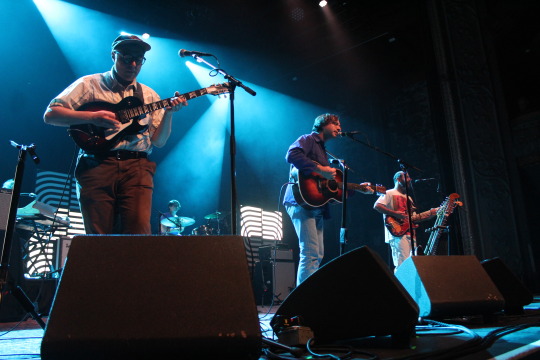
Lynch, Niss, Courtney, & Bleeker
#live music#real estate#thalia hall#domino#alex bleeker#daniel#infinite jangle#siriusxmu#domino recording company#martin courtney#r.e.m.#automatic for the people#daniel tashian#justin schipper#adam schlesinger#sammi niss#julian lynch#apple music#days#atlas#matt kallman#the main thing
0 notes
Text
Hurray For The Riff Raff Album Review: The Past is Still Alive
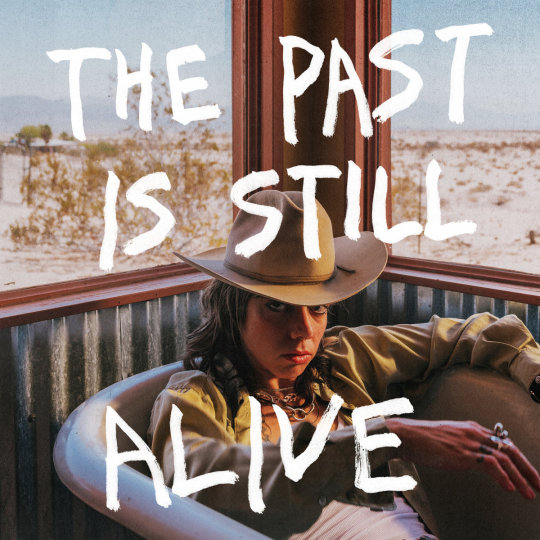
(Nonesuch)
BY JORDAN MAINZER
On The Past is Still Alive, the latest and best studio album from Hurray For The Riff Raff, Alynda Segarra looks back at a specific era of their life to pay tribute to chaos and imagine what could come from it. Their seemingly legendary but very real past is well-known by now: At age 17, Segarra left their home in the Bronx and hopped freight trains, played in a hobo band, and settled in New Orleans, a formative period of simultaneous struggle and freedom. That combined ethos has pervaded all Hurray For The Riff Raff records, but on The Past is Still Alive, Segarra's finally telling the tale, applying what they learned to the present day.
Notably, Segarra started recording The Past is Still Alive a month after their father died; while his voice appears literally on the album's final track "Kiko Forever", his musical uplift acts as a buoy for Segarra throughout the whole thing. Though they had worked with producer Brad Cook and drummer Yan Westerlund prior, Segarra had never recorded with the rest of the album's laundry list of stellar contributors, from Meg Duffy of Hand Habits, and Mike Mogis to guest vocalists Anjimile, Conor Oberst, and S.G. Goodman. That Segarra conquered a period of vulnerability to record the album with bonafide strangers is a terrific feat, but not necessarily surprising: This is a person who has the ability to treat even their fellow band members like the audience, recipients of some remarkable stories full of biography and symbolism alike.
Throughout The Past is Still Alive, Segarra alternates between timeless metaphor and hyper-specific details. On "Buffalo", they remark, simply, that "Some things take time," whether presently forming love or society's death-by-1000-cuts treatment of the oppressed. Segarra sings over strummed acoustic guitar and Mogis' pedal steel, the perfect accompaniment to earned wisdom. "Hawkmoon", on the other hand, is more electric, full of Duffy's bluesy riffing, akin to the epic sound of The Navigator, fitting for a song inspired by a lasting figure: the first trans woman Segarra ever met. As if to project to a stadium full of folks looking to honor Ms. Jonathan, Segarra sings a heartland rock-style salute: "She opened up my mind in the holes of her fishnet tights / Dildo waving on her car antenna and / I could've ridden shotgun forever." Pseudo title track "Snakeplant (The Past Is Still Alive)" juxtaposes both memories of chaos and lessons learned. As Segarra recounts shoplifting and having sex on top of an island of trash, they make sure to tell you what they took from a life among "the barrel of freaks": "Test your drugs / Remember Narcan / There's a war on people, don't you understand?" Duffy's distorted guitar and Matt Douglas's skronking saxophone create beauty from Segarra's warnings of disorder.
Some of the best songs on The Past is Still Alive are incredibly life-affirming. Opener "Alibi" is a plea to drug-addicted childhood friends, a promise that, "Maybe we'll start a band," on a song that introduces the swath of instrumentation present throughout the record, like gentle piano, steady drums, echoing guitar, and pedal steel. "Ogallala" and "Colossus of Roads" prioritize survival in a harsh world--Segarra compares themselves to the musicians still playing on the deck of a sinking Titanic--but not without a wish that the world itself would burn. Westerlund's crashing drums take the former to its logical conclusion, while the latter, inspired by the 2022 Club Q shooting in Colorado springs, makes the case for empathy along the way to the apocalypse. "Wrap you up in the bomb shelter of my feather bed," Segarra sings, fighting cruelty with compassion atop Phil Cook's mournful dobro and organ and Westerlund's funereal drum rolls.
It's a line in "Hourglass" that sticks with me the most among the lyrical and instrumental brilliance of The Past is Still Alive. Recounting feeling out-of-place among the status-obsessed, Segarra shifts their perspective. "Suddenly, a boulder's just sand in an hourglass," they sing. Though they spend much of the album concentrating on time and place, they recognize that our mark on earth is statistically insignificant, something we can use to our advantage rather than something that makes us feel small. What many in society consider important--celebrity, power, money--is volatile compared to the power of your own agency, of giving life to the past.
youtube
#album review#hurray for the riff raff#nonesuch#yan westerlund#anjimile chithambo#matt douglas#the past is still alive#nonesuch records#alynda segarra#brad cook#meg duffy#hand habits#mike mogis#anjimile#conor oberst#s.g. goodman#the navigator#phil cook
1 note
·
View note
Text
Matthew Sweet Live Preview: 4/5, Metro, Chicago
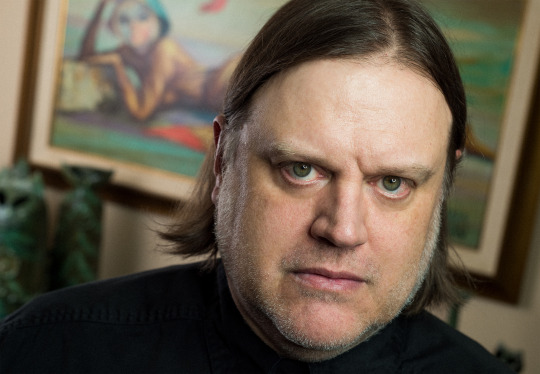
Photo by Evan Carter
BY JORDAN MAINZER
Tonight, at Metro, power pop aficionado Matthew Sweet returns to Chicago after over 5 years away. Though his most recent album was 2021's underrated Catspaw, and he is purportedly at work on a new studio record, it's actually a different recent item he shared that has me excited. Earlier this year, Sweet released his July 4, 1993 show from Grant Park, recorded by Metro Mobile Recording for WXRT. The show consisted of songs from his 1991 breakout Girlfriend, yes, but also much of Altered Beast, which would come out weeks later.
You can tell from the recording why it's considered one of Sweet's best-ever shows. Though you can imagine the crowd melting on a hot day as two of the first four songs played were slower in tempo and likely unfamiliar, yet to have their studio versions drop, it's clear concertgoers ate up the band. Television's Richard Lloyd, who lent his axe to Girlfriend, plays lead guitar, while Tony Marsico's (Cruzados, Bob Dylan) on bass and Will Rigby's (the dB's) on drums. They add dynamic riffs and meaty fills on "The Ugly Truth", and their mammoth breakdown on "Evangeline" generates applause from an audience charmed by the song's otherwise bright, buoyant melodies. And even the slinkier, more psychedelic tunes like "Do It Again" and "Reaching Out" are crystal clear. The whole collection was remixed and remastered from the original DAT source by engineer Brian Kehew, and you can hear not just Sweet's banter but even moments of crowd chatter. At one point, someone says, "Nice to see you, bro, let's get lunch," like it's an outtake from "Undone (The Sweater Song)".
Of course, though devoted fans were probably foaming at the mouth hearing so much new material, the Girlfriend songs were the unabashed highlights of the set, from the Rolling Stones strut of "Does She Talk?" to the epic, cascading "Divine Intervention". When Sweet introduces the title track, he says, "If there's any song of mine you know, this might be the one," and for good reason: He never wrote another earworm quite like it. Funny enough, Lloyd did not play lead guitar on the album version (it was Robert Quine), but his distorted solo here absolutely rips. By the time Sweet plays the final two songs of the afternoon, covers of John Lennon's "Crippled Inside" and The Troggs' "I Want You", you get a true sense of his appreciation for pop music and songwriting, and at the moment he was on stage, he was the one on top.
Not to say he won't be great tonight! Sweet should deliver an excellent set. Singer-songwriter Abe Partridge opens. Doors at 7:00 PM, show at 8.
youtube
#live picks#matthew sweet#metro#abe partridge#wxrt live in grant park chicago IL july 4 1993#evan carter#catspaw#grant park#wxrt#metro mobile recording#girlfriend#altered beast#television#richard lloyd#tony marisco#cruzados#bob dylan#will rigby#the db's#brian kehew#the rolling stones#robert quine#john lennon#the troggs
0 notes
Text
Jon Langford Interview: Serve the Song
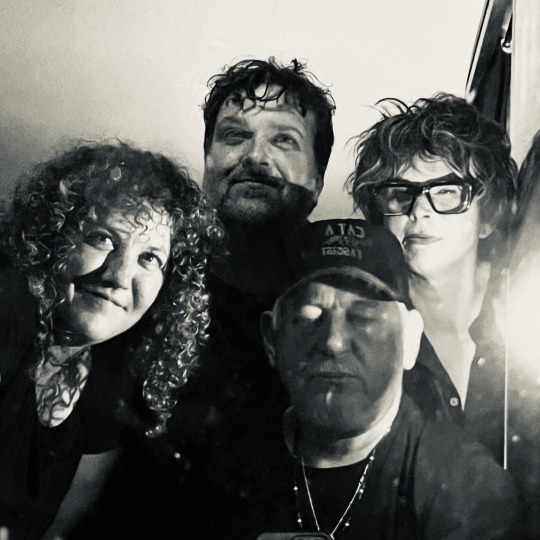
BY JORDAN MAINZER
When you ask Jon Langford what he's up to in the near future, he'll likely list a few upcoming concerts and art exhibitions before you realize he's referring to just this upcoming weekend. For the singer-songwriter and painter, the Mekon and Waco Brother, his past, present, and future discography and levels of participation seem just as vast. During his most recent visit to Austin (of which SXSW was a mere part), Langford played twelve shows: four with The Waco Brothers, three with The Far Forlon (his Austin-based band that plays Langford solo and Mekons songs), and five with The Bright Shiners, his new band that just released their debut record, Where It Really Starts (Tiny Global Productions). But Langford views himself as a mere thread rather than the center. "I am lucky to get to work with people more talented than me," he said to me over the phone after returning from SXSW. Sarcasm aside, Where It Really Starts epitomizes that democratic approach. "I love having not all of the responsibility on myself to come up with stuff," Langford said. "It's not a solo album. It's better than that."
The Bright Shiners started when Langford and John Szymanski, his frequent musical partner, attempted to make a duo acoustic guitar record that resulted in some interesting tunes, but not enough to resist contacting singer and keyboard player Alice Spencer. That is, though the Austin-based Spencer played in soul-funk band Shinyribs, Langford and Szymanski were enraptured by her solo work and Mellotron playing. Spencer was on board, and then Langford and Szymanski brought in violinist Tamineh Gueramy. The four wrote the majority of the songs on Where It Really Starts, with Langford concocting first drafts, Spencer arranging, and the group taking them to fruition. The result is easily the most lush music of Langford's career, from the steadily chiming "For The Queen of Hearts" to the dulcet "I Have A Wish".

Where It Really Starts is rich without being overstuffed, a natural combination of layered guitars and vocal harmonies, piano, pedal-affected strings, looped percussion, and of course, Mellotron. In other words, it's folk music with contemporary touches, Langford's storytelling firmly in the present while sometimes sounding appropriately old-timey. His vocal delivery resembles that of a troubadour on the fluttery, swaying "Awake The Land Of The Shadows"; he passionately trills on "Seahouses". And on "Discarded", a duet with Spencer, the two finish each other's sentences like a sardonic country couple. "You can talk about love, you can talk about society," sings Langford, "But when push comes to shove, you wiped the floor with me," responds Spencer, atop brawny, off-kilter horns. "Seahouses" and "Discarded", specifically, contain a multitude of musical ideas Spencer brought to the table, the former's filmic feel and the latter's horns. And even producer Brian Beattie gets his kicks: The album's final track, which sounds like an outtake from or demo of "Discarded", was actually Beattie playing all of the instruments in the studio and recording his half-hearted attempt at the lyrics of "Discarded", which The Bright Shiners found so funny, they decided to put it on the album.
My interview with Langford was not set up through a publicist. I literally said hello to him when I ran into him at The Beer Temple, at which point he mentioned he had a new record coming out that he'd be down to talk about. Two weeks later, we spoke on the phone. He and The Bright Shiners signed a two-album deal with Tiny Global Productions, so you can expect to hear more, but who knows what else--spontaneous or otherwise--Langford will get up to. In the meantime, read our interview below, edited for length and clarity.

Since I Left You: When did The Bright Shiners form, and when did you start writing Where It Really Starts?
Jon Langford: It was more a social thing. We were talking. Alice Spencer was in a band...she's a keyboard player and a very good technical singer. She was doing other solo stuff which was really fascinating. She has a jazz background, but isn't into that virtuoso jazz stuff. We decided to write a few songs with John Szymanski and Tamineh [Gueramy.] John [had] been working with me, and I said to him [about Alice], "This woman's playing a Mellotron." And he said, "We should form a band with her." I didn't know there was such a thing as digital Mellotron. It's really kind of fascinating to me. Most of the songs are co-writes by the whole band. But I was handing over sketches and [Alice] was turning them into fully realized arrangements with vocals.
SILY: Did you come up with the lyrics?
JL: All the lyrics are mine.
SILY: How did you finish the songs? Was that a group effort?
JL: Yeah, the arrangements and the songs. The guy who produced it with us, [Brian Beattie,] had been working with Alice a lot. They'd done a duo together. The studio is called The Wonder Chamber. Alice was doing some recording there and sent me some video. I said, "Where is this? This is fantastic! If we do anything, this is where we should do it."
SILY: Is it in Austin?
JL: Yeah.
SILY: It seems to me that this album, more than your other solo albums, exists in the folk tradition but with more contemporary touches. Maybe that's the digital Mellotron. Would you agree?
JL: Yeah. We just wanted it to be kind of minimal. We started off with acoustic guitars, because John and I had been doing that for quite a while in a duo. We tried to make a record just me and him with acoustic guitar. It was alright, and we had a few ideas, but that's kind of on the backburner.
Music is so inherently collaborative. I've had solo records where I was totally in charge. This is basically something else. The song "Seahouses" was this epic thing Alice came up with based on something I'd sent her. I thought, "I don't remember writing this." It was mind-blowing. So beautiful, so different.
SILY: It definitely is a song that sounds like the seaside.
JL: There's something cinematic about it. I want to bash things down as simply and plainly as possible. That one has some epic moments. It's minimal in the sense that it's not a jam band. It's more like a dub reggae record where you have parts that lock and drive the song along and serve the record. When there's no singing, the parts get kind of detached from it. You can listen to these individual parts. It's getting away from the virtuosity and soloing: Just trying to serve the song.

SILY: Was there anything different this time around that inspired your lyrics?
JL: That's a good question. I'll have to talk to my therapist about that. [laughs] The lyrics are quite personal. They are inspired by the visual art I do. "For The Queen of Hearts", there was a painting called The Queen of Hearts that I made, a country singer that's like a playing card, body on top and repeated underneath. She's got two heads and is singing. The other one is a skull. I thought the song was kind of based on that.
SILY: Are you contextualizing each song with paintings you've done that might have inspired them?
JL: Some of them. "Seahouses", I went to a place called "Seahouses". It's a really dramatic place in the north of England, kind of bleak, pebbles rolling and smashing against each other, permanent and impermanent at the same time. The transitory nature of life and time itself, or something. It sounds really bonkers when I say it like that. [laughs]
Each song, I guess, has its own life. There's a lot of visual stuff in them.
SILY: There seems to be a good mix of songs that are reflective or internal and others more about storytelling, such as "Tell Me Your Story".
JL: I wrote that with a friend in Chicago, Jenny Bienemann. She had a project where she would write haikus and would hand them out to [people] to write a song from it to perform in a concert. There were 15 haikus, and she said, "Pick one you like." I thought "Tell Me Your Story" was fantastic. When you meet someone, you want to find out everything about them.
SILY: When you write or listen to folk music, do you tend to draw parallels between the modern day and the past?
JL: I think I write pretty much in the present. I'm not writing nostalgic or particularly optimistic [songs] anymore. I've tried to temper realism or pessimism.
SILY: A song like "The Emperor's Fiddle", with lines about talking to the dead and necromancing, and a line like, "We have more guns and disease than you can ever use" sounds like something that could be from an old folk song, but you could apply it to the modern day.
JL: You can apply it to the modern day. It's about going up the river and selling the Natives whiskey.
SILY: Why did you choose to throw in an unlisted track at the end that's basically an outtake of "Discarded"?
JL: That's actually Brian Beattie setting up the studio before we even arrived and playing all the instruments himself. [laughs] The first time I sat in the studio properly, he played me that. [laughs] I could have walked out. "Are you taking the piss? Are you making fun of us?" We all find it really amusing. "Is it you...I?" It grew on me in the end. I was like, "It's gotta go on."
SILY: It's like when people leave in studio chatter, but taken to the extreme.
JL: It exists. I don't know what else we were gonna do with it. Put it in a box and bury it somewhere? [laughs]

SILY: Did you do the album art for this?
JL: It's a collaboration between me and Jim Sherraden, the master printer at Hatch Show Print in Nashville. It's his woodcuts and my central figures.
SILY: How does it relate to the story of the album?
JL: It's parallel. I started working with him when we started The Bright Shiners. It was work that I was making. The idea of two people with a guitar flying through the air. There's an ethereal nature to a lot of these songs that ties in quite nicely. I like the idea of the printmaking. It's ornate. I like repetition. Mark E. Smith said, "It's not repetition, it's discipline." I find that in a lot of music I like. There doesn't have to be a high point or piano solo for people to show off their virtuosity. I thought that was a good parallel to the album. It can be beautiful and serious, but it doesn't have to be.
SILY: You can apply what Mark E. Smith says to listening, to, especially more repetitious songs that take a level of discipline or commitment, especially when they have abstraction to it.
JL: This is sort of artistic conceit. It wasn't just folk songs. We were definitely thinking about robotic, repetitive things going on. Some sort of hypnotic thing. "A Scale of One to Nine", I just wanted to [write a song] that sounds good when it comes back. [laughs] It's really relentless.
SILY: Any time you include wordless harmonies, it wriggles its way into your head.
JL: I don't like when people ask if I've made a concept record. Every record's a concept record to me. It's not like I've made a rock opera. It's a definable narrative. There's a story.
SILY: For how long have you been playing these songs live?
JL: [For] probably about eight months. After playing [at first], we understood what we wanted, and the writing process became a lot easier. We didn't do a whole album in one sitting, it was about four sittings, a few songs each time, and we got better at working. The song "I Have a Wish" is completely live. We wanted to see what it was like all playing together. It was really beautiful. We knew what we wanted to do. It's a simple song.
SILY: It has a really nice lilting melody.
JL: Alice is a really good singer. Most of the songs are duets. She really listens to phrasing and writes harmonies over the top. A lot of the time she's doing quite odd harmonies that are kind of cool.
SILY: How was it adapting some of the other songs to a live performance?
JL: It was pretty easy with this. We don't try making it sound exactly like the record. We did some gigs with a bass player and percussionist last year. Economically, we can't really do [that all the time]. We need to make it work as a four-piece. John and I have an understanding, telepathically, if I go up the neck, he goes down. The snare drum is often playing more percussively than he is, and he's finding notes that are similar to what's on the record but not exactly. Everybody sings really well, as well. We all sing together. There are beautiful moments. Tamineh uses pedals for the violin, and there are a lot of violin effects she's using. She'll use them in place of electric guitar on the record. Some Mellotron sounds are pretty fantastic. The violin with pedal delays can sound like a whole orchestra.
SILY: Did you put horns on "Discarded"?
JL: We did. Alice wanted to put a Salvation Army [brass] band on a track. I wasn't there when she did it. She got some people from Austin. I mirrored the part she was playing on the Mellotron and made it into something bigger. I wasn't sure about that song.
SILY: Are you always writing songs?
JL: Yep. I haven't for a while. I think when we finished the album, I definitely went through, at the end of last year, a phase where I wasn't doing anything. It's like a muscle. Once you turn it on again, it's like a tap. If you're not writing, you are writing somewhere in your head. A lot of things in the songs seem strange to me now because I didn't know what I meant when I wrote them, but sometimes, when we sing them on stage, I go, "Bloody hell, I wonder whether that's what that means." [laughs] It's kind of revealing tapping into the subconscious. That's where a lot of the stuff gets written.
SILY: Do you find it the same when someone in the audience might ask what something means or say a song means something different to them? Do the songs then change meaning for you?
JL: I kind of like the limitations of being a songwriter in the sense you can try and communicate something, but it might be misconstrued. I think that brings responsibility to what you talk about. It's so boring to set up a message, and say, "This song is about." It's a delicate balance to start writing songs and not be pedantic but still be authentic. Hopefully, people think about what you're singing about.
SILY: Is there anything you've been listening to, watching, or reading lately that's caught your attention?
JL: I listen to a lot of reggae still, but it's not new. I've got a vinyl player in my painting studio. I like that it stops every 25 minutes and you have to go and choose something else. You can't just put on a playlist. A lot of British reggae music from the 70s and 80s which wasn't appreciated at the time but is pretty fucking great. Steel Pulse, Misty in Roots. Bands I saw and played with at the time.
#interviews#jon langford#tiny global productions#john szymanski#alice spencer#tamineh gueramy#the beer temple#jenny bienemann#hatch show print#where it really starts#the mekons#the waco brothers#sxsw#the far forlorn#shinyribs#brian beattie#the bright shiners#the wonder chamber#the queen of hearts#jim sherraden#mark e. smith#salvation army#steel pulse#misty in roots
0 notes
Text
Waxahatchee Album Review: Tigers Blood

(ANTI-); Album art credit: Molly Matalon
BY JORDAN MAINZER
On Tigers Blood, Waxahatchee's long-awaited follow-up to 2020's career-best Saint Cloud, Katie Crutchfield trusts her gut and doubles down on the styles of music she grew up listening to. Written while on tour in 2022, during which Waxahatchee opened for many of her musical heroes like Lucinda Williams, Sheryl Crow, and Jason Isbell, Tigers Blood is an album at ease with general unease. Saint Cloud was the first album Crutchfield wrote newly sober and in love with her current partner Kevin Morby, and it glowed. Tigers Blood, then, sees her fully entering a new phase, channeling life's trials and tribulations into poetry, finding new ways to appreciate old things.
Perhaps it's hindsight, but "Right Back to It", the lead single from Tigers Blood, exemplifies what the album does best. Crutchfield considers it the first love song she's ever written, and it's one of her strongest, both in terms of vocal delivery and lyricism. She's able to subvert traditional rhyme schemes by unexpectedly bending syllables, packing in just as many words as emotional punches when setting the scene. "Photograph of us / in a spotlight / on a hot night / I was drifting in and out / Reticent on the off chant / I'm blunter than a bullseye / Begging for peace of mind," she sings over Phil Cook's circular banjo and Spencer Tweedy's gentle drums. The chorus, then, is simply classic, a paean to rediscovering intimacy in a relationship. "I've been yours for so long / We come right back to it," Crutchfield sings in harmony with guitarist MJ Lenderman, her coo in perfect contrast with his nasal twang. "But you just settle in / Like a song with no end," they continue. That many of the songs on Tigers Blood employ a certain breeze, free of time and place, is a feature, not a bug.
More than ever, Waxahatchee's songs are easy to sing along to; despite complex turns of phrase, Crutchfield keeps her words metaphorical enough to stand out, abstract enough to be relatable, direct enough to be iconic. The qualities, in conjunction with her and her backing band's performance, lead to some breathtaking moments. "You drive like you're wanted in four states / In a busted truck in Opelika," she sings over Tweedy's drum roll on the rolling "3 Sisters", right before the song's forbearing beat drops. On "Bored", she belts the song's chorus--"I can get along / My spine’s a rotted two by four / Barely hanging on / My benevolence just hits the floor / I get bored"--alongside Lenderman's sharp riffs, Tweedy's pummeling drums, and Nick Bockrath's wincing pedal steel. In context of the song's inspiration--a friendship that ended badly--Crutchfield's admissions hit harder. "Lone Star Lake", meanwhile, has no chorus: It just choogles along between verses as Crutchfield reflects on her faults with wry humor: "Shirk every rule of thumb / I got more where that came from."
Crutchfield's voice, too, has never been more expressive. For every song like "Right Back To It" or "Crimes of the Heart", where her flow is deft enough to rival your favorite rapper's, there's a song like "Crowbar", where she stretches out "I" into so many syllables you can feel the shaking vulnerability. "365", a song about codependency and addiction, places her falsetto high in the mix, emphasizing her susceptibility: "I catch your poison arrow / I catch your same disease / Bow like a weeping willow / Buckling at the knees." Fittingly, Tigers Blood ends with everybody in the recording studio--even assistant engineer Natalia Chernitsky--singing the chorus, suggestive of the universality of Crutchfield's prose. Ultimately, she knows that there's strength in numbers. When she tries to take shortcuts alone, the chickens come home to roost. "Throw a brick through the window, leave your mess at my door," she sings on "Tigers Blood", "Lord knows sooner or later it'd wash up to shore." Tigers Blood lays it all bare.
youtube
#album review#waxahatchee#spencer tweedy#tigers blood#anti-#anti- records#molly matalon#saint cloud#katie crutchfield#lucinda williams#sheryl crow#jason isbell#kevin morby#phil cook#mj lenderman#nick bockrath#natalia chernitsky
0 notes
Text
Mclusky's Good Intentions
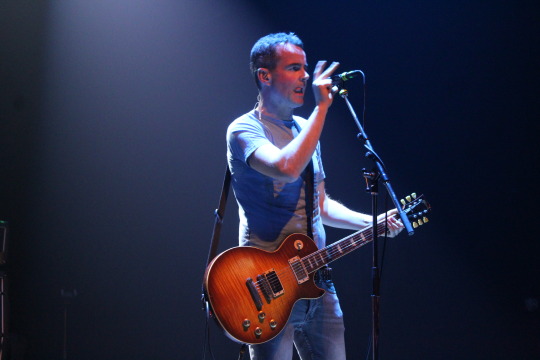
Mclusky's Andy "Falco" Falkous
BY JORDAN MAINZER
"Fuck This Band". It's the name of the song Andy "Falco" Falkous and Mclusky have been opening their sets with on their triumphant return to many North American cities, including Chicago last Friday at the Vic. It's an effective calm before the storm of noise and chaos that inevitably enraptures the moshing crowd. And it's an appropriate sentiment, tongue-in-cheek and self-deprecating, referential to the very loud ruckus that presumably caused the initial postponement of these tour dates to begin with. A Molotov cocktail of aural health issues forced Falkous to make fans wait a little bit longer to celebrate 20 years of Mclusky Do Dallas. It was immediately apparent from the opening chords of "Dethink to Survive" that our patience paid off: Falkous and drummer Jack Egglestone donning protective headphones, the band launched into a burst of razor wire guitars and pummeling percussion, and never stopped.

From left to right: Mclusky's Damien Sayell, Jack Egglestone, Falkous
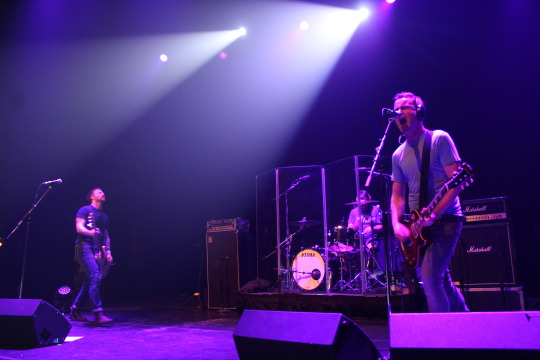
Sayell, Egglestone, & Falkous
The post-hardcore band's influence is wide-reaching. You can hear Falkous' everyman sprechgesang in the cubicle shouts of Pissed Jeans' Matt Korvette, his frantic non-sequiturs in the nervy yelp rock of Squid, both of whom were featured on the house playlist before Mclusky took the stage. But the band continues to be good at its own game, too. Last year, they shared their first new material in 19 years, and they played two of those released songs on Friday, sounding like 2002 just as much as 2023. "Two minutes and forty five seconds is the optimum length of a rock and roll song," Falkous declared, after letting the audience know it was okay not to pretend they like new songs. But "Unpopular Parts of a Pig" is a trademark Mclusky tune, alternating between deceptively melodic shouts and droning chants, plus a loud-quiet-loud dynamic and sardonic lyrics chiding useless platitudes. Thematically and instrumentally, it nestled perfectly between the ugly guitar distortion and Damien Sayell's meaty bass on "Day of the Deadringers", and crowd favorite "Lightsabre Cocksucking Blues". Meanwhile, the blown-out bass of "The Digger You Deep" and unreleased barnburner "Et Tu, Edwards?" gave the crowd a chance to let loose between "She Will Only Bring You Happiness" and "You Should Be Ashamed, Seamus", two The Difference Between You and Me Is That I'm Not on Fire songs that satirize the tortured artist and toxic masculinity.
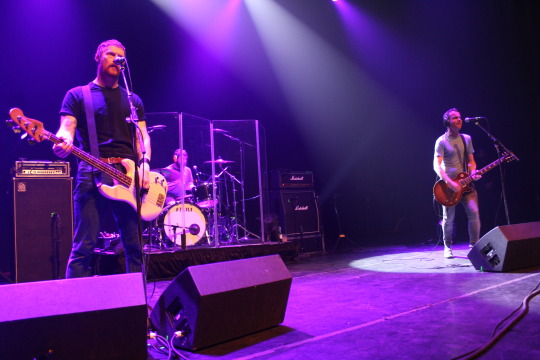
Sayell, Egglestone, & Falkous
Really, though, to a certain generation of Mclusky fans, Friday first and foremost represented an event we thought would never come. To hear Falkous' introductory chirping on "Without MSG I Am Nothing", Egglestone's brawny thuds on "Chases", and the shout-alongs of "To Hell With Good Intentions" and "Alan Is a Cowboy Killer" was a thrilling exercise in nostalgia for some and disbelief for others. Towards the end of the set, Falkous took the time to thank everyone involved in the show, even those he had met just that night, an act of working class solidarity before his effortless bout of sarcasm: "This cavalcade of sincerity must end soon." Given Falkous' ability to lighten the mood through his well-intentioned derision, it's easy to see why Mclusky continues to be great today.

Falkous

Sayell
#live music#mclusky#andy falkous#damien sayell#vic theatre#mclusky do dallas#andy “falco” falkous#andrew falkous#falco#andrew “falco” falkous#the vic#the victoria theatre#the vic theatre#jack egglestone#pissed jeans#matt korvette#squid#the difference between you and me is i'm not on fire
2 notes
·
View notes
Text
SPRINTS Interview: Personal to the Bone

BY JORDAN MAINZER
The first great album of the year came out five days into it, belying the post-New Year haze and bitter cold, walloping us into paying attention. Letter to Self, the debut LP from Dublin post-punk quartet SPRINTS, out via City Slang, is a tremendously assured collection of songs that the band describes as "to-the-bone" personal. They're led by singer-songwriter Karla Chubb, whose taut shouts, full-throated yells, and pained but deliberate lyrics match the utter tenseness of the compositions. She sings about her life, and topics ranging from depression and ADHD to sexuality and Catholicism, but without the overt autobiography that can plague even the most well-intentioned writers. Her singing sonically traverses the sinews of Colm O'Reilly's lead guitar riffs and bassist Sam McCann and drummer Jack Callan's brawny rhythm section. Each song is its own journey, and when they end, it feels like you've been holding your breath the whole time.
Though SPRINTS showed promise with their early material, they sound like a complete band with their debut. Working with Gilla Band's Daniel Fox in the studio helped them embrace the charged intensity that makes their live shows so thrilling. Letter to Self begins with "Ticking", the song that's been at the start of their live setlists, on which foreboding guitar, a double-tapped snare, and Chubb's chants build to a false explosion before the full beat truly drops. (Moments like this make it clear that the majority of the band are horror and sci-fi fans, but not necessarily obsessed with jump scares.) "Heavy" builds up similarly, with twangy guitar squalls and trilling drum fills, as Chubb asks pointed questions like, "Do you ever feel like the room is heavy?" before melismatic belting, lamenting that she's "watching the world go round the window beside me." Elsewhere, they combine the frankness of Fontaines D.C. with the cascades of Midwest emo ("Shaking Their Hands") and delve into swirling soundscapes ("Can't Get Enough of It"). As for Chubb, she knows when to scream; at her most full-throated, like on "Shadow Of A Doubt", she's a dead ringer for Courtney Love.
As much as SPRINTS' instrumentation purveys the spirit of their songs, Chubb is a deft lyricist, writing clever rhymes and cutting barbs alike. On "Cathedral", she chides the heartlessness of the Irish Catholic church when it comes to their views on queer folks like her: "He's singing from a hymn sheet, I'm singing for the others / They say I've gone cold while I'm sat drowning in the gutter." "Adore Adore Adore" bemoans the sexist double standards of the music industry, wherein anybody but a straight cisgender male is subject to only love or hate. "Am I everything you wish you had?" Chubb asks, "Or am I everything you detest?" Perhaps best is the album's closer, the title track, where Chubb honors her own ability to conquer trauma, generational and otherwise. "I can shake the leaves of hereditary," she sings, pronouncing the final word "he-re-di-tree" in a cheeky bit of wordplay, continuing, "I don't have to take the path that was carved out in front of me." On Letter to Self, Chubb and SPRINTS in general toss off a world of fear and shame in favor of self-love and acceptance.
SPRINTS plays Schubas on Tuesday night. Back in January, I spoke with Callan about Letter to Self, playing live, horror, and film scores. Read our conversation below, edited for length and clarity, and know the Irish band is excited to be in Chicago mere days after our raucous St. Patrick's Day celebration.
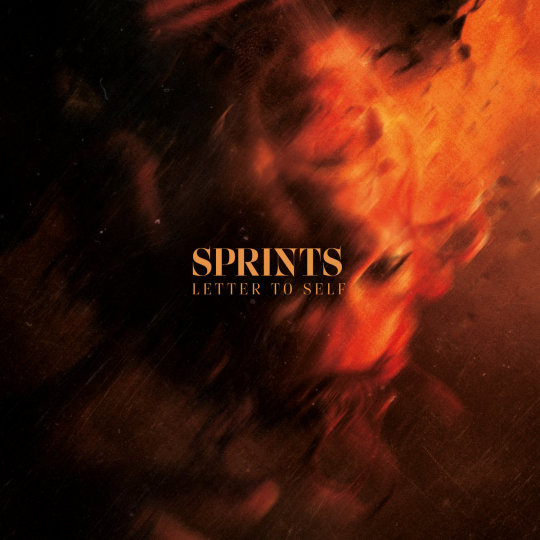
Since I Left You: One of the things I love about Letter to Self is that the instrumentation and the song structures engage the themes just as much as the lyrics do. Can you talk about creating a mood between words and instruments?
Jack Callan: That boils down to the songwriting process. It usually starts with Karla. It could be one riff on guitar or start with lyrics or melody. A lot of the time, and especially with the two opening tracks on the album, "Ticking" and "Heavy", from the get-go, we talked about building a literal feeling of anxiety. That's probably the case for most of the songs. We're trying to match the emotions of the music. The intensity of the song dictates the dynamics. It's quite natural: We all know each other so well.
SILY: As the drummer, specifically, you're at the forefront of toying with our expectations, especially on a song like "Ticking". You think it's going to explode into a rousing moment, but it pulls back. It eventually explodes, but there's a push-pull throughout.
JC: Yeah, absolutely, particularly with "Ticking". It's probably one of the oldest songs written on the album. We probably wrote it at the same time as the songs on our second EP. It didn't really sit well with those [songs], but we always knew we were going to come back to it. When we started properly planning for [Letter to Self], we knew it was going to be the opening track because it has such a slow build. You think it's going to kick in, but it doesn't. Live, we start sets with that, and it sets the tone nicely and builds the anxiety.
SILY: One of the most powerful things about Karla's lyrics is that she asks questions. "Do you ever feel like the room is heavy?" You don't know who she's talking to, but as a listener, it almost feels like she's talking to you. How do you feel about that confrontation when playing live?
JC: I think it's incredibly effective. The way Karla writes is very personal and vulnerable, but in a way it's not so specific you know exactly the circumstance what she's talking about.
SILY: The album title Letter to Self reminds me of a diary. It's a cliché album descriptor when writers say that a personal album is "like reading someone's diary," but this one truly is. If I were to pick up somebody's diary without knowing them, it wouldn't make total sense. I might be able to relate to vague feelings, but I wouldn't know the specifics they refer to. Do you think the record achieves an ideal level of abstraction?
JC: Absolutely. A lot of it was about dealing with those emotions or experiences. Since we've started out as a band, Karla's become more comfortable being vulnerable and open in her songwriting. Our first EP had some personal things, and our second EP was about the self and everyday life, but this is more to-the-bone personal. I think that felt very natural to Karla. There's an honesty to it. She's writing about her own experiences and how she feels about them.
SILY: How is playing the songs live from an emotional standpoint? Do you find yourselves in a similar headspace to when you recorded them, or do you let loose?
JC: I think the recording process, especially for Karla, was more taxing emotionally. Before recording, we rehearsed songs a bunch, and we messed around with demos for a while, but because the lyrics are so personal, putting down the tracks in the studio, that's when it hits you that the songs are going to go out into the world and everyone will listen to them. When you're in the studio, and there's no live audience, just us and Daniel Fox, our producer, it just feels a lot closer. By the time you get to the live set, the music isn't just ours anymore. People will interpret it any way they want. The live shows take on a life of their own, as well. It's more about the band at that point. The live shows have a lot of energy, a lot of fun. On stage, we've never really taken ourselves too seriously. We have a bit of a laugh, even when the subject matter is heavy.
SILY: Have the live versions instrumentally or structurally taken on a new life? Do you extend things or change things up at all?
JC: A little bit. Not as much with some of the album tracks yet, because we haven't been playing them as long. It's usually something that happens naturally. Some of the songs from the EPs we play differently. "Literary Mind" was recorded again for the album. It's is way faster than the original recording. We recorded it and started playing it live. How it is on the album is closer to how it is live.
SILY: Do you have a favorite of the Letter to Self songs to play live?
JC: Probably "Cathedral". The start of that song is a bit scary, but the chorus is proper all-out headbanging. We've played it a little bit live, but not for that long.
SILY: I can imagine that's a cathartic song for you to play live. You're just pounding along.
JC: Yeah. Loud and fast.
SILY: What's the story of the cover art?
JC: It was a still taken from the music video for "Adore, Adore, Adore". During the video, there's a scene where Karla has been abducted and wrapped up in gauze. If you look closely, you may notice the thick eyebrows and mustache: I'm one of the abductors. There's a plastic bowl with water in it her head was being dunked into. The photo was taken from underneath.
SILY: Something not everyone would realize just listening to the album is how much all of you--except for Sam--love horror films and sci-fi.
JC: It was definitely a big inspiration for the videos in particular. It was thematically linked to the "Adore, Adore, Adore" video, but also just a bit creepy and weird.
SILY: Over the past 10 years or so, there's been a resurgence of artful horror films that aren't just genre pieces, that deal with a lot of the same themes on this record. They use an aesthetic to explore themes that might be traditionally explored in different genres. Do you have some favorite contemporary horror films?
JC: I'm definitely a big fan of Hereditary and Midsommar. They were a reference point, slightly thematically, and aesthetically as well. Slightly creepy but not slasher horror. Stuff that's unsettling. Especially with the music. It's not jump scares, just that slight feeling of, "I don't feel right about this."
SILY: Have you ever thought about trying film scoring?
JC: I would absolutely love that. I saw the original Suspiria not that long ago that Goblin did the score to. It's super weird. The film's amazing, but the score is incredible as well. When I saw it, I thought, "I could totally see us doing something like this." It would be a lot of fun.
SILY: I know Letter to Self just came out, but are you the type of band constantly coming up with new songs? Or do you have to sit down and dedicate time to it?
JC: There's constantly new stuff knocking around. There are already demos for what could be album 2. Even from [Letter to Self], there are plenty of demos that couldn't make it in the end. You do eventually need to find time to sit down all together and work on stuff. It's increasingly difficult as we're on the road so much, but we need to block in weeks throughout the year so we have time to do it.
SILY: Is there anything you've been listening to, watching, or reading lately that's caught your attention?
JC: I just finished Goodbye to Berlin by Christopher Isherwood. The last book I read was Carmilla by Sheridan Le Fanu, which came out 20-30 years before Dracula. It's similar, with vampires, but there's a lesbian love element to it. It's really good, only 150 pages. A lot of people reckon Bram Stoker stole a lot of his ideas for Dracula from it. There's a lot of what we now think of as vampire lore in it from what we [attribute to] Bram Stoker. There's a castle in vague Eastern Europe [in Carmilla], so he definitely lifted some ideas from it.
I went to see Spy Kids in the cinema last week. That was a lot of fun. I don't know why they were showing it, but it was a favorite of mine as a kid. I'm going to see Poor Things tomorrow.
youtube
#interviews#live picks#sprints#city slang#schubas#letter to self#karla chubb#colm o'reilly#sam mccann#jack callan#gilla band#daniel fox#fontaines d.c.#courtney love#st. patrick's day#hereditary#midsommar#suspiria#goblin#goodbye to berlin#christopher isherwood#carmilla#sheridan le fanu#dracula#bram stoker#spy kids#poor things
0 notes
Text
Laetitia Sadier & Radio Outernational Live Show Review: 3/12, Empty Bottle, Chicago

Laetitia Sadier
BY JORDAN MAINZER
Laetitia Sadier's set Tuesday night at Empty Bottle was a mix of idealism, determination, and empathy. Such a combination exemplifies the connotation of the very title of her first solo album in 7 years, Rooting For Love (Drag City). Like her work with Stereolab, Rooting For Love employs a wide array of instrumentation--guitar, bass, synth, organ, trombone, vibraphone, live and programmed drums, zither, vocals--to present songs that are simple-sounding in execution, but deceptively complex. For every foray into lounge funk, there's an off-kilter psychedelic freak-out; in combination with Sadier's spirituality and collectivism, it makes for an album that you can deeply explore as much as you can vibe to.
Tuesday, Sadier, on stage alone, pointed to her synthesizer and joked, "This is the band...It's the same every night." In a way, playing to recordings and samples seems to occupy its own, different level of difficulty, as you can't as easily improvise your way out of messing up. Thankfully, Sadier not only nailed it, but employed a looper and processed her scraggly guitar playing to build up and tear down her compositions, adding unexpected chaos for those in the crowd who had voraciously consumed the new record. "Protéïformunité" featured washy noise and a drum beat, Sadier immersing herself in the music to the point of dancing, as she sang mantras like "L’objectif est de limoger l’ignorance, d’interrompre le cycle sans fin de la souffrance,” or, "The goal is to remove ignorance, to interrupt the endless cycle of suffering." Again, as with Stereolab, Sadier showed that visionary ideas can sound, simply, pleasant.
Of course, while you wouldn't describe Sadier as a realist, she's also certainly unafraid to confront, and Tuesday, she performed the two most provocative tracks from Rooting For Love. "Don't Forget You're Mine", co-written with Veronique Vincent (of Belgian avant-rock band Aksak Maboul), tells the story of an academic couple whose more-successful husband is threatened by his wife's sudden success to the point where he torments her with psychological and physical abuse. It was here where Sadier warped her beatific guitar playing into something more fuzzy, as if to emphasize the skin-crawling nature of what she was singing about, contrasting the lovely timbre of her voice. On the studio version, she repeats, from the point of view of the abuser, "Get up, babe!" over siren-like instrumentation, like a plea to society to eliminate internal and external toxicity. "Cloud 6", meanwhile, started with chopping and screwing her operatic vocals, her trombone pulsating on the off-beat of the arpeggiated synth line, before turning more clear. Sadier waxed about how the process of fear encapsulates a wholesale turning away from humanity; "How can you be seen and known and loved when you have your armor on," she asked? The song ended with her most frank declaration: "This armor is keeping you from the gifts I've given you / I'm not fucking around / You're halfway dead." In the context of not only Sadier's songs that decry capitalism and war, but the world today in general, "Cloud 6" was a call to wake up.

Radio Outernational's Aaron Shapiro, Kenthaney Redmond, Hunter Diamond, & Wayne Montana
Opening for Sadier was local quintet Radio Outernational, who features three current members of funk-punk heroes The Eternals. While Radio Outernational haven't released any recorded music, they've been playing around town since last year, clear in their chemistry. Flutist and saxophonist Hunter Diamond and flutist Kenthaney Redmond effectively harmonized, one often trailing the other, especially on the songs that employed dual flute. Guitarist Aaron Shapiro offered funky licks rife with swirling wah wahs and prickly stabs. The rhythm section, bassist Wayne Montana and drummer Areif Sless-Kitain, propelled the slinky tunes, providing a bed for the other three players to flourish. Radio Outernational was a wholly appropriate opener for Sadier, as it was almost like they were the physical manifestation of the type of cosmic cooperation she sings and dreams about.
#live music#laetitia sadier#empty bottle#drag city#hunter diamond#aaron shapiro#areif sless-kitain#rooting for love#radio outernational#drag city records#stereolab#veronique vincent#aksak maboul#kenthaney redmond#wayne montana#the eternals
1 note
·
View note
Text
Omni Album Review: Souvenir
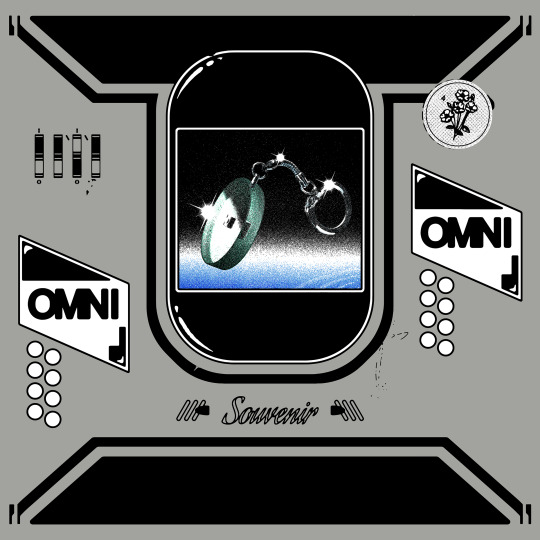
(Sub Pop)
BY JORDAN MAINZER
On their fourth album Souvenir, Atlanta post-punk trio Omni don't necessarily sound like a new band, but they're certainly reinvigorated. From 2016 to 2019, they released three records, including their Sub Pop debut full-length Networker. Five years later, with some time to think, writer, record, and mull over next steps, Omni have given us their first record on which any song could be a single, each managing to worm its way into your ear while still defying expectations.
For one, Omni has refined their aesthetic. Singer and bassist Philip Frobos went into the recording of Souvenir inspired by the gentle, melodically droll singing of his favorite college rock frontpeople. Engineer Kristofer Sampson, working with the band for the first time, placed Frobos' voice higher in the mix than on past albums, increasingly emphasizing the songs' obtuse lyrics that fittingly contrast the acuteness of the instrumentation. Drummer Chris Yonker joined Omni full-time, offering cutting precision on "Exacto" (no pun intended), skittering flourishes on "Common Mistakes", and disco grooves on "Verdict". And vocalist Izzy Glaudini of L.A. no wavers Automatic joins on three tracks, harmonizing and engaging in absurdist chants with Frobos.
Two tracks on Souvenir stand out not for necessarily being catchier or better than the others, but for the extent to which they exemplify Omni's essence. On opening track "Exacto", Frobos sings, "Exacto, de facto, concise, quite right," as if to create a mantra, but later defies the band's facetiously robotic tendencies with dry jokes and sprinkling effects. "I'll love you like the first night / For the rest of our lives / Mr. Big Shot always forgets to introduce his wife," he jokes. On "INTL Waters", he asks, "Why follow the rules like everybody else?", the band eventually interrupting the song's established light piano and wiry bass with brash, staccato percussion and Frankie Broyles' buoyant lead guitars. Whether Omni's settled into a treadmill or strayed from their defined formula, they're effective satirists of the everyday.
The songs on Souvenir certainly don't tell stories, per se, but they find the pathos in individual moments. Two people in a fraying relationship get mugged on "PG", as Frobos looks on the bright side: "You know I never minded the taste of blood." They find their inner grump on the wincing "To Be Rude", Frobos crooning over Broyles' scraggly guitars, "Excuse me ma'am / What's in your decanter? Mezcal and endless banter." And then there's closer "Compliment", a post-modern collection of anxieties about the economy, self-image, and artistic integrity. "It's nothing new / I'm guilty of it, too / Looking at someone else's life / Thinking, hey man, that looks nice," Frobos shrugs. When Omni is thoroughly enjoying observing everyday life, who can fault them for finding inspiration in what's right in front of them?
youtube
#album review#omni#sub pop#kristofer sampson#chris yonker#souvenir#sub pop records#networker#philip frobos#izzy glaudini#automatic#frankie broyles
0 notes
Text
Madi Diaz & Jack Van Cleaf Live Show Review: 3/6, Lincoln Hall, Chicago
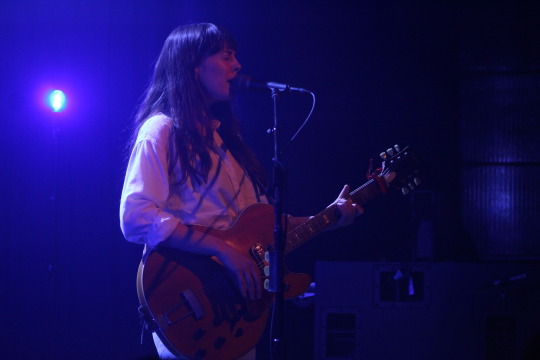
Madi Diaz
BY JORDAN MAINZER
"I've got these purple shoes--they're very cool," Madi Diaz shared Wednesday night at Lincoln Hall as she tuned her guitar. Someone in the audience replied, "Tell us more!" Diaz didn't hear them, but the crowd member's response was apropos of Diaz's open-book nature as a songwriter and performer. Over her past two albums, 2021's History of a Feeling and last month's Weird Faith (Anti-), through her unflinching honesty, Diaz has created a solidarity of self-expression, anthems out of moments and feelings we might otherwise be ashamed of (loneliness, crying in public). She's put to song the peaks and valleys and beginnings and ends of relationships with others and herself, the non-linear nature of realizing that she loves, hates, feels a burning desire, and in turn deserves to feel it all. Turns out, a lot of other folks have had experiences similar to hers, making it easy for them to sing Diaz's words back to her and feel a palpable connection.

Diaz
Diaz walked out to Cass Elliot's "Make Your Own Kind of Music", a fitting sentiment to introduce a show in which she laid bare her vulnerability and created an atmosphere for others to do the same. Truth be told, she knows how to start a song, an album, and a set; "Same Risk" confronts a love interest about a level emotional playing field. "What the fuck do you want? Cause I'll give you all that I got," she sings on the Weird Faith and set opener, each subsequent line one-upping the prior in terms of frankness, culminating with the question, "Do you think this could ruin your life?" and the admission, "Cause I could see it ruining mine." Though the album version has the proper canyons of space to give room for Diaz's heavy confessions, the live version was comparatively stripped-down. On stage, Diaz played guitar and sang alongside multi-instrumentalist Adam Popick, who played drums and synthesizer, sometimes simultaneously. Though Diaz's lyrics are often diaristic, conversational, and clear, that they were less obscured by instrumentation as on the album made them all the more in-your-face. As such, a song like upbeat strummer "Everything Almost", wherein she wonders whether she's doing and saying the right things in a burgeoning relationship (and she's even doing the wondering out loud, in real time) is borderline like watching theater: At one moment, she cracks up at the thought of being a needy pregnant partner, and at the next, cowers at the idea that her parents might not be around to meet their grandchild.
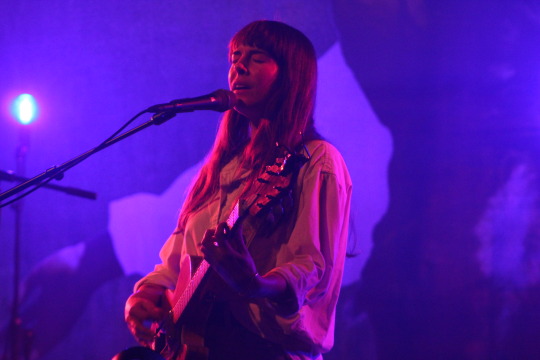
Diaz
Diaz's unbridled outpouring can be jarring, but it's undoubtedly powerful. On Wednesday, huge-sounding songs like "For Months Now", "KFM", and "Resentment" transformed into intimate singalongs. "Hurting You", performed solo on acoustic guitar, became an even more hushed ode to picking yourself back up after a heartbreak, learning how to move on from grief. And though Kacey Musgraves didn't show up to duet "Don't Do Me Good", the crowd's belting of the all-timer country chorus was as stubborn as the song's protagonist herself.
If Diaz has grown as a songwriter over time and as she's penned for pop and country stars, it's clear that her time opening for the likes of Waxahatchee, Angel Olsen, and Harry Styles has allowed her to understand that, when performing, just because a space is big doesn't mean it always needs to be filled. The subject matter of her songs could be constantly cried out, but she belted only for maximum impact, contrasting the dulled tom thuds on "Get to Know Me", or holding a single note on "Crying in Public". For the most part, her vocal delivery was subtle, especially when she harmonized with Popick on "Girlfriend" and delved into fatalistic tricks on the unreleased "Worst Case Scenario", a song that tests her "theory of imagining the worst possible thing happening" so that it won't happen, or "expecting nothing and then being pleasantly surprised." At one point, on "Worst Case Scenario", she exclaimed, off-beat, "I'm gonna think of it!" over chugging drums and barn-burning riffs, recalling the tossed-off singing of Jason Molina.

Adam Popick and Diaz
Where Diaz finds ultimate peace is not in fatalism or nihilism but a sort of existentialism. She spends a lot of Weird Faith looking for meaning in giving your all to someone, and even weather patterns. But on "Kiss the Wall", she proclaims, "Nothin' is a waste of time," connecting the most boring moments when we're waiting in line for something to one's own legacy, perceiving that we all make tiny changes to earth. During her encore, Diaz said she didn't believe a mere two years ago that she could spend time on stage singing about such a raw period in her life. As she wrote Weird Faith "on the backs of mantras," she started to believe in herself. It's clear, now, that one of those mantras is that every moment carries weight. She ended the night performing the title track on acoustic guitar, visibly emotional as she left the stage. As the house lights went up, we were graced by none other than Limp Bizkit's cacophonous cover of George Michael's "Faith", a reminder that even the cruelest of jokes can be earnest expressions of the universe's necessary chaos.
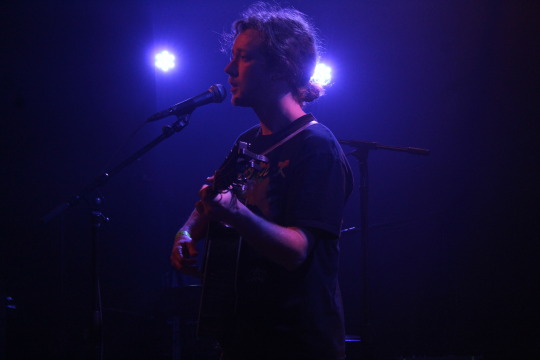
Jack Van Cleaf
Opening was Nashville-via-Chicago songwriter Jack Van Cleaf, an acoustic guitar picker whose songs and performances, like Diaz's contain heart-to-heart chatter. Lines like, "Love is like a rattlesnake / Before it bites, it tries to warn ya," from "Rattlesnake" were perfect bedfellows to Diaz's "Same Risk". And perhaps it was a mix of Van Cleaf fans and Diaz fans attuned to storytelling, but I was wowed by the audience's reaction to his songs as much as the songs themselves. On the unreleased "Using You"--which employs drug metaphors to explore how people use each other for attention during a relationship--the audience reacted with every lyrical twist and turn, despite likely never before having heard the song. After performing it, Van Cleaf asked those taking videos to tag him on Instagram, not for clout, but so he could watch it and fine-tune the song. Yes, such symbiosis carried seamlessly into Diaz's set, but for Van Cleaf in a vacuum, it's easy to see how another unreleased song like "Piñata" came to be given his appetite for feedback. It wasn't just the words themselves but the way he delivered the line, "I'm full of sugar / I'm full of niceties / I'm full of shit," that hit harder than a candy bar after too many edibles. Next time Van Cleaf comes to Lincoln Hall, he might be the headliner making people cry.
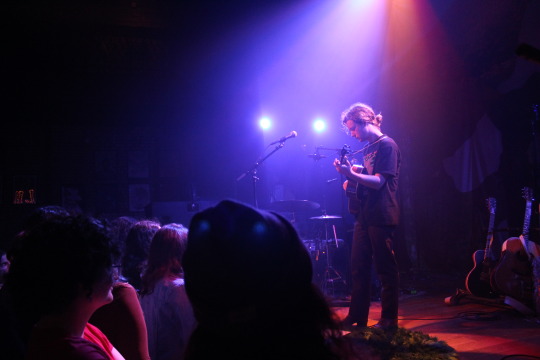
Van Cleaf
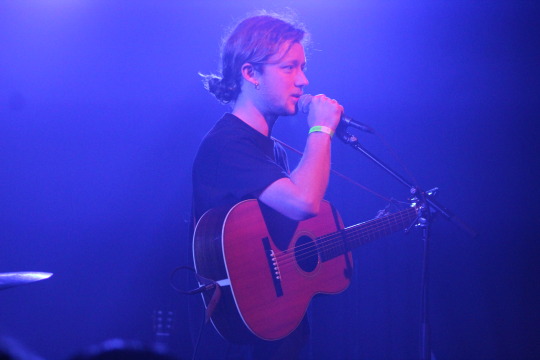
Van Cleaf

Van Cleaf
#live music#madi diaz#jack van cleaf#lincoln hall#weird faith#history of a feeling#anti-#anti records#cass elliot#adam popick#kacey musgraves#waxahatchee#angel olsen#harry styles#jason molina#limp bizkit#george michael
2 notes
·
View notes
Text
Katy Kirby Album Review: Blue Raspberry

(Anti-)
BY JORDAN MAINZER
Cubic zirconia. Blue raspberry flavoring. Synthesizers: Do they truly possess less innate worth because they're not organic? Or is worth determined by the value we put on them? These are the questions Katy Kirby grapples with on her sophomore album Blue Raspberry, but in the context of self-definition, outward image, and the mind games of people in a relationship. Just like on her stellar debut Cool Dry Place, Kirby's clever wordplay elevates mundane imagery into deeper queries on life and love. Blue Raspberry, though, is more biographical and more instrumentally sweeping; that is, Kirby's first written album as an out queer woman, more emotionally complex than anything she's released to date, required more elaborate arrangements and production than the comparatively sparse Cool Dry Place. "Why wouldn't that be enough?" she sees herself asking throughout the queer love songs of Blue Raspberry, always answering by yearning for something more lush than bedroom recordings of bedroom-and-beyond tales.
Nonetheless, on Blue Raspberry, what happens between walls carries major consequences, and Kirby expertly builds up her stories. Take opener "Redemption Arc"--its title itself a reference to plot and narrative--with its initially arpeggiated piano and Kirby's vocals following the melody atop weeping strings. "I pour out a drink and I stand for a toast / I raise up a glass to your personal growth," she sings, ambiguous in her tone. Eventually, you realize she's being sarcastic, which mirrors her significant other's lack of genuineness: "You misspelled apology / You ended it with I and E / Diminutive contrition / But I still know what you mean," she sings, sliding a grammar joke into her barb. Towards the end of the song, producers Alberto Sewald and Logan Chung's pattering drums and distorted bass swell as Kirby tries to prevent tragedy, albeit recounting the dark humor of the event: "I lock the doors and I talk you down," she sings, quipping, "I put our reconciliation in my calendar." Leave it to her to supply an album's worth of sounds and moods in one song.
But with Blue Raspberry, Kirby's given us a whole collection of tunes tied together through their balance of romance and rawness. "Cubic Zirconia" concentrates on surface-level attraction and her attempts to nonetheless dig deeper. "Magazine quiz called you apple shape / You look to me like dollar signs," Kirby flirts, eventually admitting that her wants can usurp her needs: "I'm still craving that unstable sort of shine." The collection of key instruments on the song, from panning Rhodes piano to organ, gives it an expansive, yet tactile feel, an expert manifestation of how even the cheapest jewelry and plastic can gleam. The album's title track--whose writing process helped Kirby realize her own queerness--plays with similar ideas of authenticity. Her vocals are layered and pitch-shifted, horns and acoustic guitars muted by otherworldly synthesizers, the perfect backing to similes like, "Her eyes burn white as Styrofoam right into me."
Perhaps most rewarding about Blue Raspberry is the extent to which the same instruments can conjure contrasting feelings. Swirling, percussive textures and plucked strings on "Hand to Hand"--reminiscent of Fetch the Bolt Cutters--recall the unvarnished emotions of breakups, but in the contrast of "Fences"' statement of agency, provide a breezier sway. Sean Brennan's forlorn cello leads "Party of the Century"'s reckoning with the ethical responsibility each of us have as the world burns, while it menaces the slow-lurking, doomy "Alexandria", a song about something far more personal: the dissolution of Kirby's first queer relationship. For the whole record, Kirby enlisted the likes of Rowen Merrill to compose baroque orchestral arrangements to match the cinema of the album, which they do to great success on piano ballad "Salt Crystal" and chiming satire "Drop Dead". Kirby's anything but obvious, though, as it's actually the most gentle-sounding song that viciously guides you through the peaks and valleys of infidelity. Over a slinky instrumental, Kirby sings, "I turned off my location / Let her fuck me like you thought you did," before delivering the kicker: "I remember every minute." On an album concerned with inner and outer beauty, Kirby at least comes away with the realization that the deeper you go, the greater the permutations for levels of ecstasy and hurt.
youtube
#album review#katy kirby#anti-#blue raspberry#cool dry place#alberto sewald#logan chung#fetch the bolt cutters#sean brennan#rowen merrill
0 notes